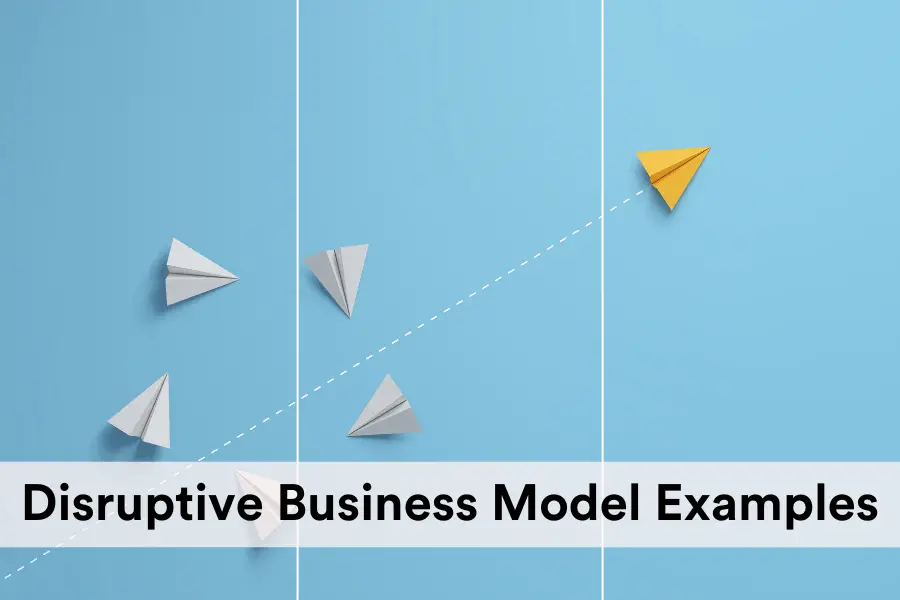In the fast-paced world of business, staying ahead of the curve often means embracing disruptive business models that challenge traditional norms and pave the way for innovation. As a business enthusiast, I’m excited to delve into the realm of disruptive business model examples. Get ready to uncover what makes these models so unique and how they can spark creativity in your own entrepreneurial journey.

Disruptive business models are innovative approaches to conducting business that shake up established industries and redefine the rules of the game. These models often challenge conventional practices, pushing boundaries and paving the way for significant growth and transformation. At Blackwomangreat.com, we celebrate the spirit of innovation and entrepreneurship, making this exploration of disruptive business models a perfect fit for our community.
Table of Contents
What is a Disruptive Business Model?

Before we dive into specific examples, let’s first understand what exactly constitutes a disruptive business model. A disruptive business model is characterized by its ability to create new markets or fundamentally alter existing ones by introducing innovative products, services, or processes. These models often target underserved segments of the market or cater to customers in a unique way that traditional competitors have overlooked.
Types of Disruptive Business Models

1. Subscription-Based Models: Companies like Netflix and Spotify have revolutionized the entertainment industry by offering subscription-based services that give consumers unlimited access to content for a fixed monthly fee. This model disrupts traditional pay-per-use or ownership models, providing greater value and convenience to customers.
2. Peer-to-Peer Platforms: Platforms like Airbnb and Uber have disrupted the hospitality and transportation industries by connecting individuals directly with service providers, bypassing traditional intermediaries. This peer-to-peer model leverages technology to create a more efficient, cost-effective way of accessing services.
3. Freemium Models: Companies like Dropbox and LinkedIn offer freemium models that provide basic services for free while charging for premium features or upgrades. This disruptive approach attracts a wide user base and monetizes through upselling high-value services to engaged customers.
4. Direct-to-Consumer Brands: Brands like Warby Parker and Casper have disrupted traditional retail channels by selling directly to consumers online, cutting out middlemen and offering high-quality products at lower prices. This model enhances customer experience and builds brand loyalty through personalized interactions.

Related Post: Redefining the Future: Top 7 Disruptive Business Models Transforming the Industry
Disruptive Business Model Examples

One notable example of a disruptive business model is that of Tesla, the electric vehicle company founded by Elon Musk. Tesla’s approach to sustainability and innovation has disrupted the automotive industry by accelerating the adoption of electric vehicles and challenging the dominance of traditional gasoline-powered cars. By focusing on design, performance, and eco-friendliness, Tesla has captured the imagination of consumers and set new standards for the industry.
Another compelling example is Airbnb, the online marketplace for lodging and tourism experiences. Airbnb’s peer-to-peer platform has disrupted the hospitality industry by empowering individuals to rent out their properties to travelers, offering unique accommodations and personalized experiences. This model has redefined the concept of hospitality and expanded the options available to travelers worldwide.
Characteristics of a Disruptive Business Model

Innovative Approach: Disruptive business models are founded on innovation, introducing fresh ideas and approaches that challenge the status quo.
Customer-Centric: These models prioritize customer needs and preferences, creating value propositions that resonate with target audiences.
Adaptive and Agile: Disruptive businesses are nimble and adaptable, able to pivot quickly in response to market changes and emerging trends.
Scalable and Sustainable: Successful disruptive models are scalable, allowing for growth and expansion while maintaining operational efficiency and profitability.
Market Disruption: Disruptive businesses shake up markets and industries, forcing incumbents to reevaluate their strategies and offerings in response to new competition.
Continuous Improvement: Disruptive models are constantly evolving, seeking feedback and iterating on their products and services to stay ahead of the curve.
In conclusion, embracing disruptive business model examples is key to staying ahead in the fast-paced world of business. These innovative models challenge traditional norms, push boundaries, and drive significant growth and transformation.
By examining what makes these models unique, we’ve highlighted how they can spark creativity and inspire your entrepreneurial journey. At Blackwomangreat.com, we celebrate the spirit of innovation and entrepreneurship, and we encourage you to explore and implement disruptive business models. Embrace this opportunity to redefine the rules and pave the way for a brighter, more innovative future in your industry!

